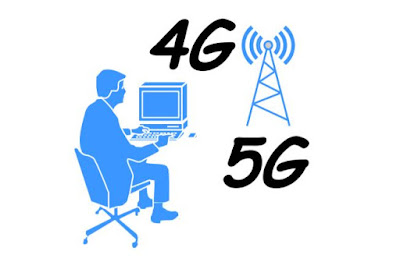4G
4G is a mobile phone network technology, and like its predecessor 3G, it can be used for downloading data and accessing internet, but the difference is that it’s a lot faster than 3G.
5G
5G is the fifth generation of wireless network technology.It is built on what’s called millimeter waves, a section of very high frequency spectrum upwards of 20 GHz all the way up to 96 GHz.
All about 4G technology
All about 5G technology
4G is a mobile phone network technology, and like its predecessor 3G, it can be used for downloading data and accessing internet, but the difference is that it’s a lot faster than 3G.
5G
5G is the fifth generation of wireless network technology.It is built on what’s called millimeter waves, a section of very high frequency spectrum upwards of 20 GHz all the way up to 96 GHz.
 |
| 4G Network - 5G Network |
All about 4G technology
- 4G stands for Fourth Generation technology
- The maximum upload rate of 4G technology is 500 Mbps
- The maximum download rate of 4G technology is 1 Gbps
- The latency of 4G technology is about 50 ms
- 4G offers CDMA
- 4G can’t differentiate between fixed and mobile devices
- 4G has the advantages of high speed handoffs, global mobility
- 4G can be used for high speed applications, mobile TV, wearable devices
- It is slow and less efficient in comparison of 5G
All about 5G technology
- 5G stands for Fifth Generation technology
- It provides maximum upload rate of 5G technology is 1.25 Gbps
- Providing the maximum download rate of 5G technology is 2.5 Gbps.
- While the latency of 5G technology is about 1 ms
- 5G network offers OFDM, BDMA
- 5G has the capability to differentiate between fixed and mobile devices. It uses cognitive radio techniques to identify each device and offer the most appropriate delivery channel.
- 5G has the advantages of extremely high speeds, low latency
Comments
Post a Comment